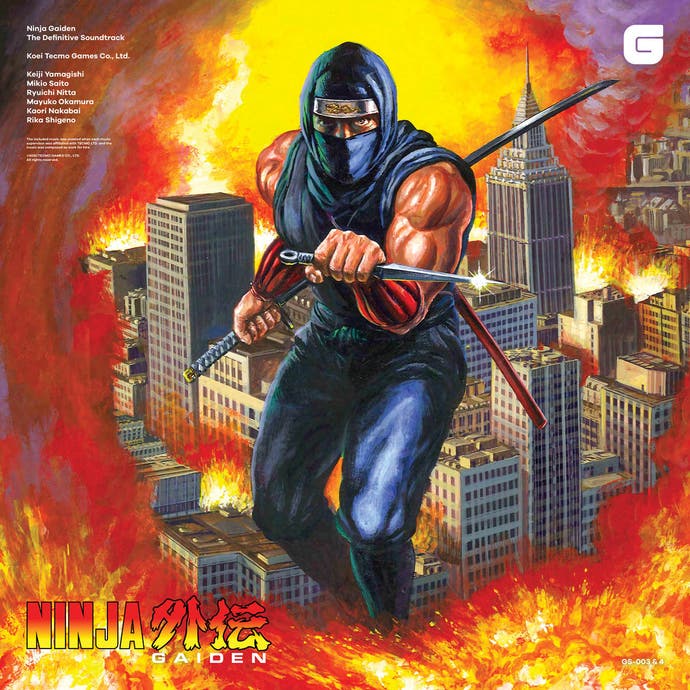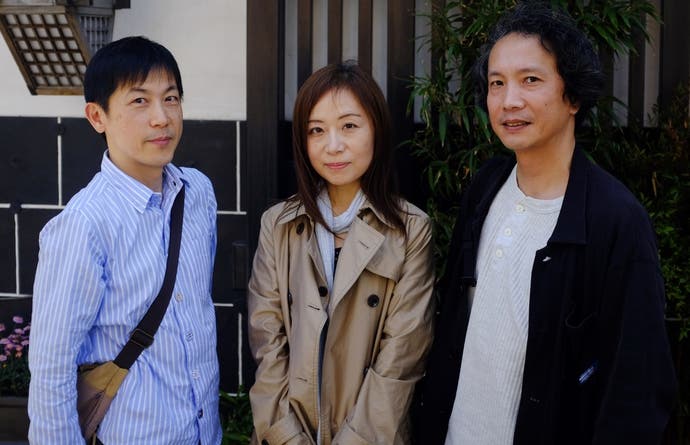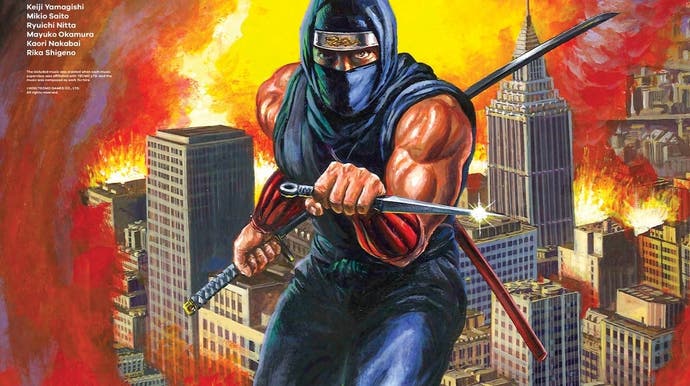The afterlife of an 8-bit soundtrack
Ninja tunes.
Context is king. Which is what makes this afternoon's performance in a busy Kyoto hall all the more interesting, really. Behind a small table on which a pair of laptops and some mixing desks are neatly laid out, two well-presented middle-aged Japanese people study their screens for a few moments, exchange a couple of nervous glances and then let rip with a high-pitched arpeggio that's soon joined by a kicking four-to-the-floor beat. It sounds intense, with all the drive and swagger of a clubhouse classic. And of course it's the soundtrack to a video game that's coming up to 30 years old.
It's hardly the first time that an 8-bit soundtrack has been used to fill a dancefloor, though I do detect a slight sense of bemusement from the two performers when I speak them elsewhere that day. Keiji Yamagishi and Kaori Nakabai are two veterans of the Famicom era, reunited at this year's BitSummit for a live performance of the Ninja Gaiden 3 soundtrack, and brought together by the resurgence of interest in 8-bit soundtracks in recent years.
Maybe that's because they're an endearingly humble pair, giggling their way through our brief interview and clearly enjoying the opportunity to reminisce. Both worked at Tecmo in the 80s, Yamagishi getting his break on the US version of Star Force while Nakabai worked on the likes of Captain Tsubasa and Ninja Gaiden - though they both had different entry points into the industry.
"When I started, there simply weren't many video game composers around," explains Yamagishi. "I just got very lucky - my only real formal training was playing in a band at college. If that happened today, there's no way I'd get the job, as there's so many people better qualified than me!"

Nakabai, meanwhile, did have the qualifications, having trained as an electric organist. "I could make all these sounds myself as an organist - if I'd have studied piano instead, I would not be a game composer! As an organist, I started making and writing music and then working with a computer - game companies were looking to hire, and I thought it looked like something I could do, and it looks fun. So why not give it a try?"
Tecmo in the 80s sounds like it had something of the wild west about it, of a young industry still making the rules up as it went along. "When I was working on Ninja Gaiden, the producer at the time, he was a big Konami fan," Yamagishi says of what direction he was offered. "He just said, go listen to Konami! But he did also suggest listening to Capcom... So two of the big influences going into it was the music of Castlevania and Mega Man."
By the time Nakabai was composing for the Ninja Gaiden series with the third instalment in 1991 it was well-established, which certainly eased things. We had the images and the two preceding games to work from, we had all that framework," she says. "But also I wanted to make a song that could make you cry... So I set about doing that..."
That tearjerker doesn't get an airing at the BitSummit performance, where it's more about keeping things upbeat, though you can still hear it on vinyl - or, indeed, the format of your choice - thanks to BraveWave's release. It's that release that first brought Yamagisihi and Nakabai back together, and that is part of the wider interest in classic game soundtracks.
"With the Famicom, it was really just simple music," says Yamagishi. "A lot of people thought it was dumb - just blips and bleeps! But recently, now it's getting a lot easier to do more amazing things in games, game music is becoming so much more phenomenal. And with rhythm games, the main point is the music. Because all that, music is becoming so much more complicated, and it's like film scores, the interest is just getting bigger and bigger."

I think, though, that Yamagishi's modesty means he skirts around the fact that people are drawn particularly to his own work, which has been widely praised over the years. "I never expected it!" he says. "I was really surprised when the game became popular in America. I had no idea anything like this would ever happen - and I'm very happy that it has."
So what's it like for the pair returning to their older compositions? "I don't usually go back to it all," says Yamagishi. "I'm quite shy about it... You don't want to listen to your own music! But we had to for purposes of practice for this - we were asked to so we had to!"
"I don't listen to my own stuff," adds Nakabai. "But I've listened to Yamagishi's stuff - and it's great."
There's an enthusiasm that remains for the old stuff that shines through Nakabai and Yamagishi's performance at BitSummit, and through their recollections. "A lot of it was like a puzzle," says Nakabai. "It was about asking how could I work around these limitations, and compose something that has a Japanese sound."
"The limitations just made it more fun," says Yamagishi. "You'd listen to Konami's music, Capcom's music - you'd listen to it and go, oh yeah that's four tracks. Then other times you'd listen to it and think - how on earth are they doing that with just four tracks? The goal for myself was to make that kind of music - music that would make people go 'how is he doing this?' I loved that challenge."
Listening to the Ninja Gaiden 3 soundtrack as it's pumped through a huge PA system, and as the audience at BitSummit begins to get caught up in the beat, it's hard to imagine these tunes had their own beginnings on a Famicom chip. How exactly could such a modest piece of hardware provide such a big sound, you ask - so in that regard, for Yamagishi and for Nakabai, it's very much mission accomplished.

